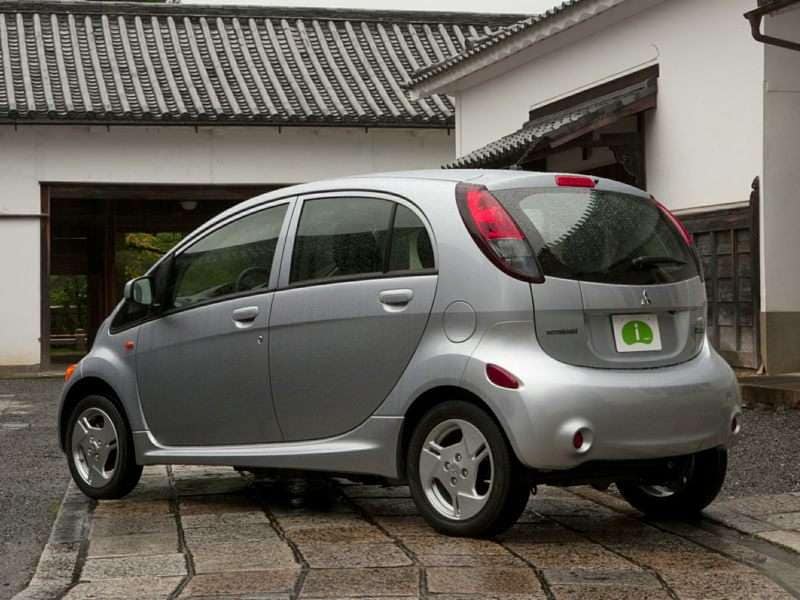Recent Articles
Popular Makes
Body Types
2016 Mitsubishi i-MiEV Review
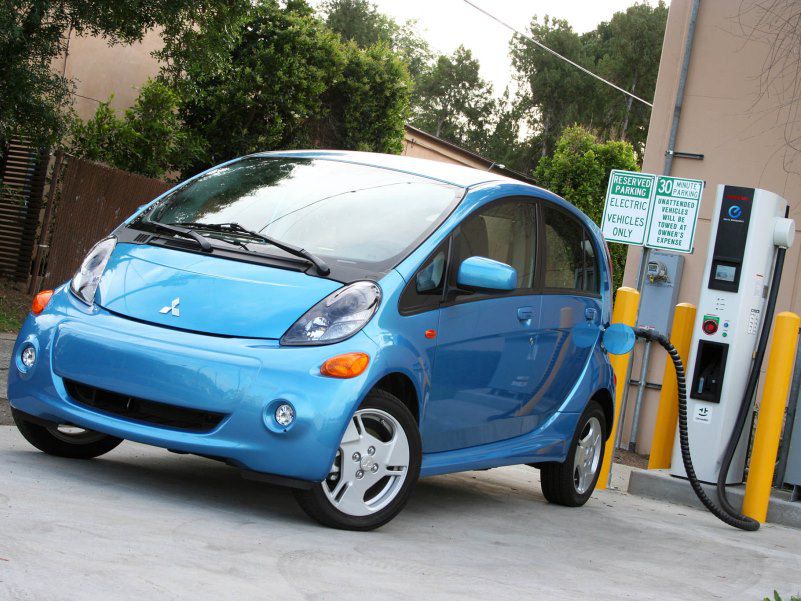
2016 Mitsubishi i MiEV charging
Electric cars don’t come cheap. Even with aggressive government incentives, you’re looking at $20,000 or more to go electric — at least you were before Mitsubishi slashed the price of its lovely little i-MiEV. Initially designed to be smaller and more efficient than other electric vehicles — an economy car among EVs, if you will — the diminutive i-MiEV was quickly eclipsed by bigger and more capable electrics. So Mitsubishi did the logical thing: It slashed the price by 20 percent.
Price and Tax Credit
The 2016 Mitsubishi i-MiEV now lists for $23,845 (including destination), so with the $7,500 federal tax credit factored in, the price drops to $16,345 — which means you can buy an electric car for less than a bare-bones Honda Fit (and then run it for about a buck a day). Yes, you’ll have to compromise a bit, but I think the i-MiEV is worth it.
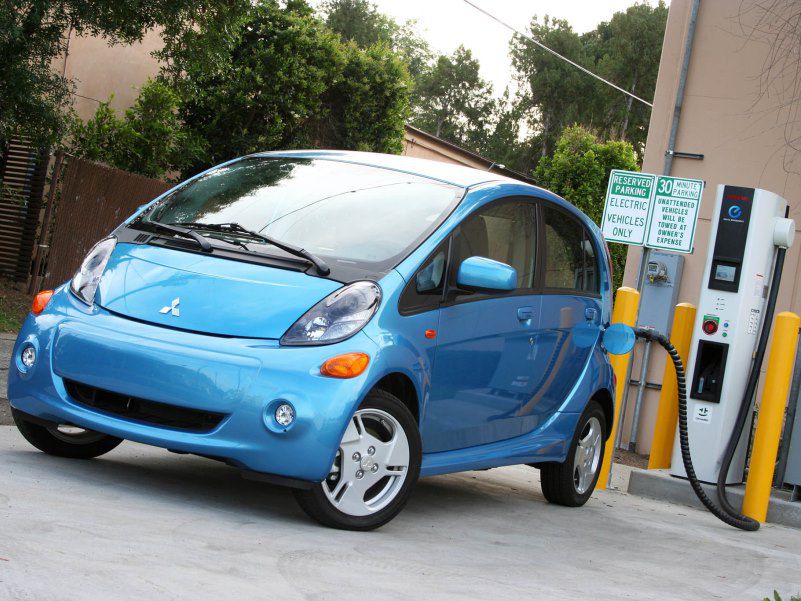
Styling and Design
Say what you will about the i-MiEV’s looks, but until someone motorizes a dinosaur egg, you won’t mistake it for anything else on the road. The i-MiEV is based on a gas-powered Japanese-market city car called the i, which is powered by an impossibly small 659cc (0.66-liter) three-cylinder engine. Despite being widened for the U.S. market, the i-MiEV still seems teeny and a bit tinny, its thin doors designed to maximize elbow room. What about crash protection? Well, the i-MiEV scored four out of five stars in the government’s crash tests. For the side-impact test, the i-MiEV scored five stars for the front seat but only two stars for the back seat.
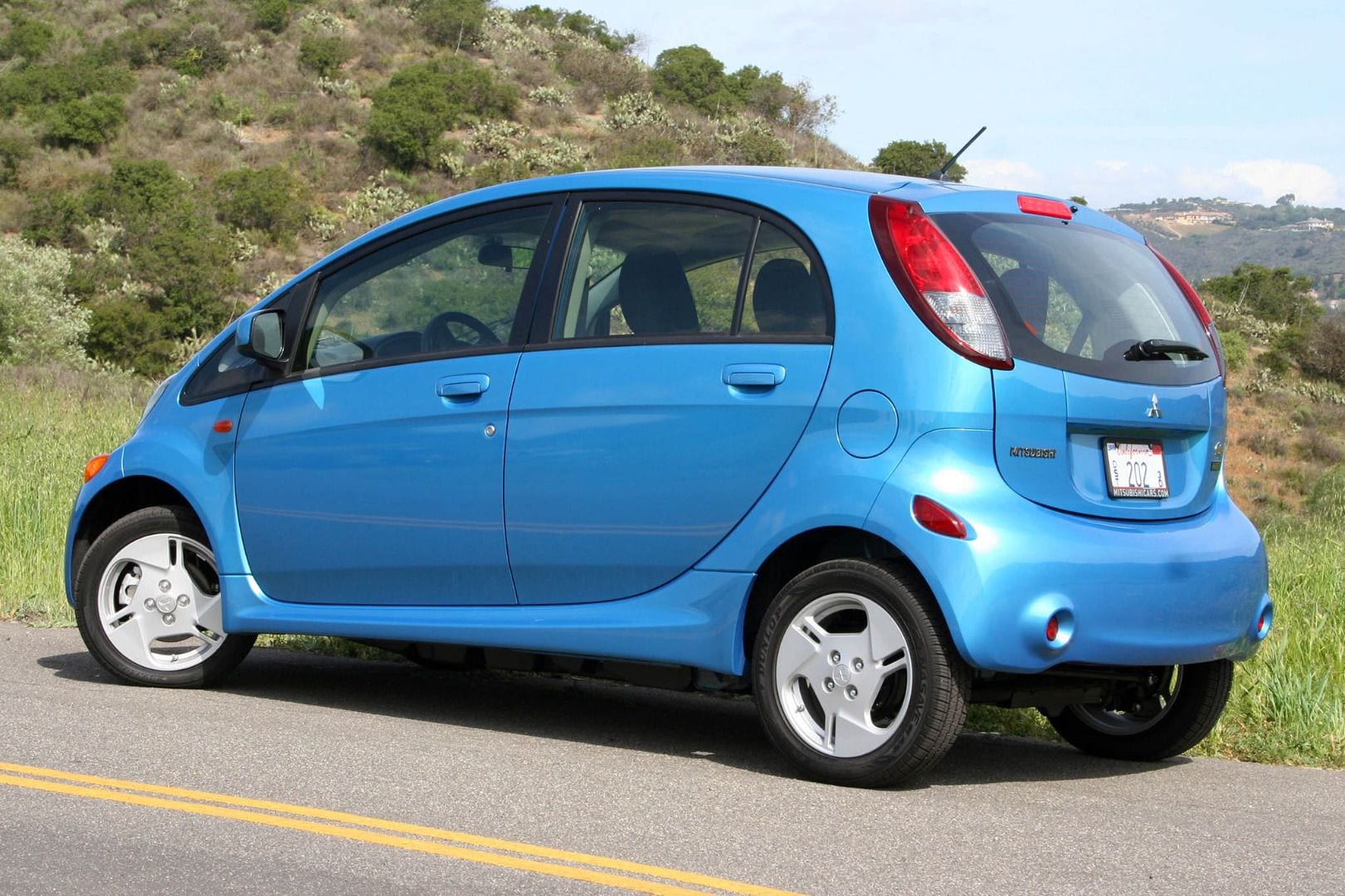
Inside the Cabin
The i-MiEV’s unusual shape pays dividends to its occupants: With the motor and the control gear stuffed between the rear wheels and the battery under the floor, the domed cabin offers up a surprising amount of space for its four occupants. There’s an abundance of headroom, and the tall front seats, big windshield, and near-vertical sides give the driver the illusion of driving a normal-sized (and normal-shaped) car. Cargo space is a grocery-friendly 13.2 cubic feet, with back seats that fold down flat to open up 50.4 cubic feet. With seats in place, the i-MiEV is decidedly a four-seater, and its maximum payload is 750 lbs.
Cabin ambiance is not exactly one of Mitsubishi’s strong suits — or at least it wasn’t when the i-MiEV was designed— which explains the cheap-looking shiny plastic on the dash, but you have to admire the simple, clutter-free control layout. The stereo is completely conventional (but for its lack of an auxiliary input port), and the A/C controls are the simple three-dial type. The shifter is a bit fussy and the seat heater switches are in strange places (the driver-side switch is near the driver’s left knee and the passenger-side switch is near the driver’s right shin), but other than that, the ergonomics are sound.
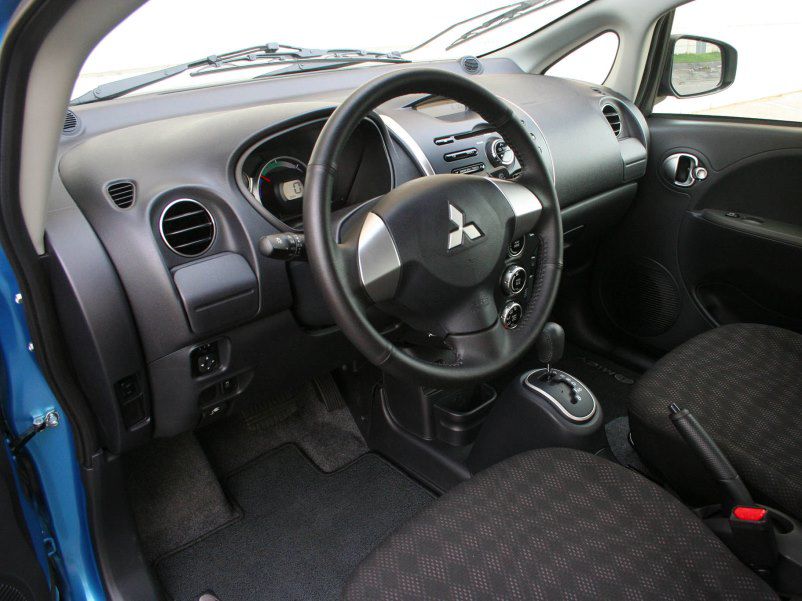
Technology and Innovation
It’s in terms of EV-specific tech, the i-MiEV’s discount price begins to show through. Though the i-MiEV does offer an optional touch-screen navigation system (annoyingly, that’s the only way to get a backup camera or a USB port for the stereo), you won’t find any fancy displays to show you how much power is being consumed by the i-MiEV’s various sub-systems or advising you how to stretch your charge an extra few miles. In fact, the i-MiEV’s instrument panel seems to be lifted directly from the gas-powered i, though with a power meter in place of a tachometer. The gas car’s fuel gauge serves as a battery level gauge, and range is displayed by the trip computer’s distance-to-empty function.
The i-MiEV also lacks an on-board or smartphone app that might allow you to manipulate charge times. This may sound like a frivolity, but such programs allow EV owners to take advantage of lower off-peak electric rates. In its place, Mitsubishi provides a small hand-held transmitter (which looks disturbingly like a remote bomb detonator from a James Bond flick) that lets you set a timer to start (or stop) charging. It has a relatively short range, and having to manually set the timer every night seems like it would get old pretty quickly.
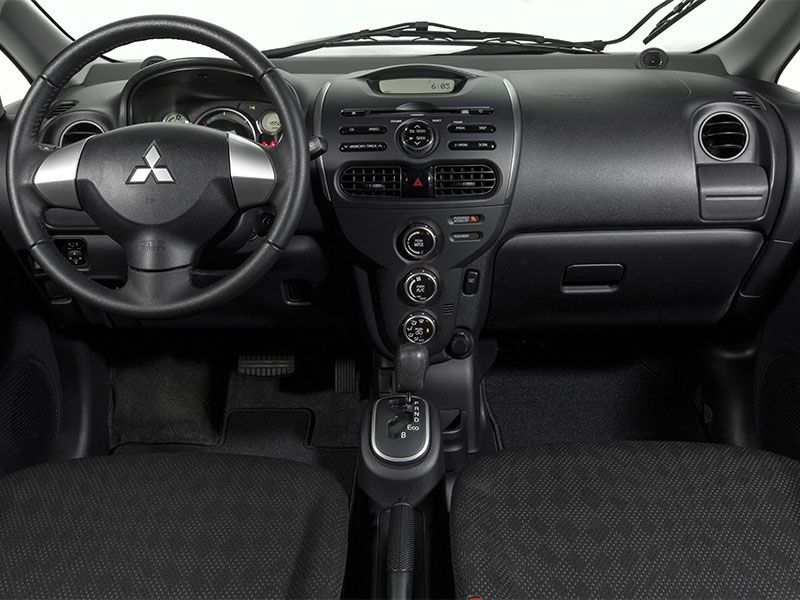
Technology and Innovation, continued
The on-board charging gear is a 3.3 kilovolt system, which needs six to seven hours for a full charge at a 240V (Level 2) charging station. Newer EVs such as the VW e-Golf and Kia Soul EV use 6.6 kV chargers, which cut charging times to four hours. That’s less important when charging at home but a factor to consider when using pay-by-the-hour public chargers. But the i-MiEV does have a quick-charge port that will juice the battery from 0 to 80 percent in 30 minutes. It conforms to the CHAdeMO standard (same as the Nissan LEAF, which happens to be the most popular EV in the U.S.), so quick-charge stations should be plentiful if you live in an EV-friendly area (I found two within three miles of my house). And thanks to the i-MiEV’s relatively small battery pack, quick charging is really quick: With the battery nearing bottom, I was able to charge the i-MiEV up to 80 percent (about 50 miles of range) within 10-15 minutes. That said, fast charging can shorten battery life, so it’s best only used in a pinch.
Speaking of charging in a pinch, the I-MiEV also comes with a 110-volt charging adapter that plugs into a normal household outlet. But unlike most such units, the Mitsubishi’s plug has both 8- and 12-amp charging modes, and the latter cuts charge time from 22 hours to a more realistic 14 hours — which means an i-MiEV owner could, theoretically, get by without installing a 240-volt charger, which is a nice savings.

Under the Hood
EVs tend to be heavy — batteries weight a lot — but the I-MiEV is a bantamweight among electric cars: At 2,579 lbs., it’s about 400 lbs. lighter than the similarly-sized FIAT 500e and Chevrolet Spark EV, and so it can make do with a smaller motor and battery pack. The motor puts out 49 kW, which translates to 66 horsepower and 145 lb.-ft. of torque. The i-MiEV isn’t a closet drag racer like the Spark EV or the Toyota RAV4 EV, but it does feel scooty around town, and it will happily cruise at 70 mph (though the driver may not be quite so happy, as the i-MiEV lacks cruise control).
The i-MiEV’s lithium-ion battery is also smaller than most at 16 kilowatt hours; compare that to the 24 kWh battery in the Nissan LEAF. The EPA rates the i-MiEV’s range at 62 miles, which falls short of other newer-tech EVs, including the Leaf (75 miles), the VW e-Golf (83 miles), and the Kia Soul EV (93 miles). Keep in mind, however, that when it comes to EVs, the phrase “your mileage may vary” is a mantra: EVs are happiest in town and in stop-and-go traffic, where the opportunities for regenerative braking are at their best. (Regenerative braking uses the motor as a generator to charge the battery during deceleration, which creates resistance that slows the car. EVs and most hybrids automatically mix regen and regular [friction] braking when you step on the brake pedal.)
With the A/C system switched off, I had no problem stretching my charge to nearly 80 miles, but driving at highway speeds or using the climate control system cut the range closer to 60 miles. Before you declare that completely inadequate, remember that most EV owners charge at home, so they have a full “tank” every morning. Mitsubishi’s warranty covers the battery for eight years or 100,000 miles, but that doesn’t cover normal loss of capacity. According to Mitsubishi, the i-MiEV’s battery capacity will normally drop to 80 percent after five years and 70-percent capacity after ten years.
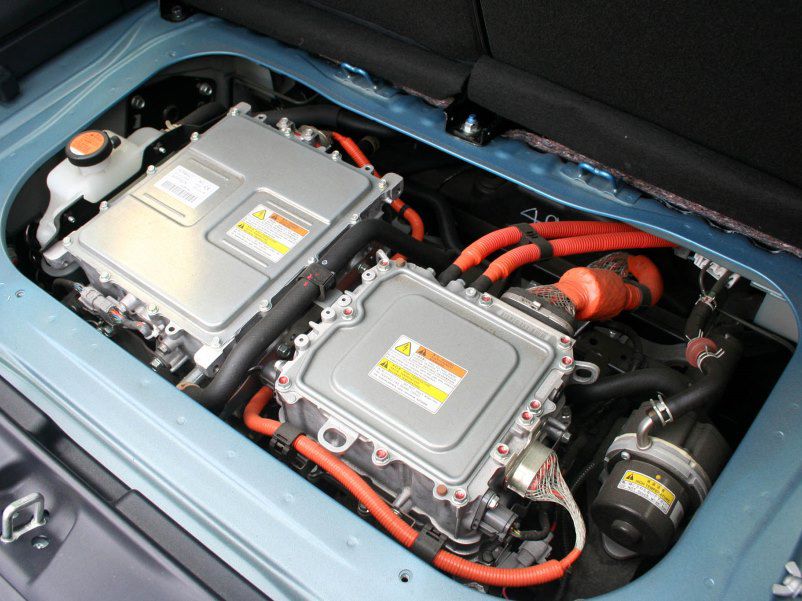
On the Road
Like other EVs, the i-MiEV has three driving modes, selected by the transmission shifter. Drive is the default; shifting to Eco lowers the power output, making it easier to conserve battery, though it will deliver full power if you floor the accelerator. Eco also applies more regenerative brake when the driver lifts off the accelerator. “B” (brake) mode has a similar power profile to Drive but with much more aggressive lift-off regen. It essentially allows one-pedal driving, but since the brake lights only come on with the brake pedal, I didn’t make much use of this mode for fear of getting rear-ended.
All in all, the i-MiEV delivers a pleasant drive. Its (relatively) long wheelbase gives it a comfortable ride, and aside from some rather bizarre noises from the air conditioning system, the i-MiEV is reasonably quiet. That’s no easy trick in an EV; without the background din of the engine, road and tire noise can be magnified. The i-MiEV does a respectable job of filtering them out.
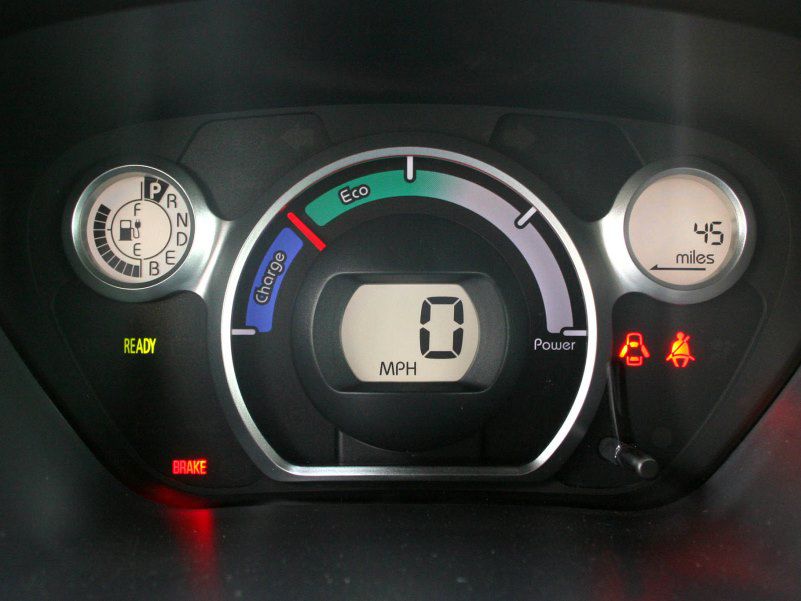
Emotional Appeal
For all its compromises, I found driving the i-MiEV to be an eminently satisfying experience and really enjoyed the ten or so days it stayed at my house. Why is the i-MiEV so appealing?
First are the joys inherent to EVs: They are smooth and quiet, they cost next to nothing to run (our EV-owning friends figure their Ford Focus Electric adds about a buck a day to their electric bill), and they are virtually maintenance-free (the i-MiEV’s recommended maintenance schedule consists of inspecting the car and replacing the cabin air filter every 15,000 miles). There is the smug feeling that comes with driving a vehicle that produces no tailpipe emissions and uses no petroleum. And when you drive an EV, you never have to visit a gas station. Ever.
And then there are the joys of the i-MiEV itself. I get rather tired of look-alike cars, so driving a rolling ellipse made me happy. And there’s something refreshing in the i-MiEV’s simplicity, that joie de vivre that good cheap cars always have. I didn’t miss the fancy electronic displays found in other EVs, and I doubt owners will either; once you get to know the car and how it fits into your daily routine, you don’t really need to know where every last electron is flowing. The inability to set a charge-time program is, I think, this car’s biggest equipment deficiency. Aside from that, it gets you from Point A to Point B on battery power, and isn’t that the essence of an electric car?
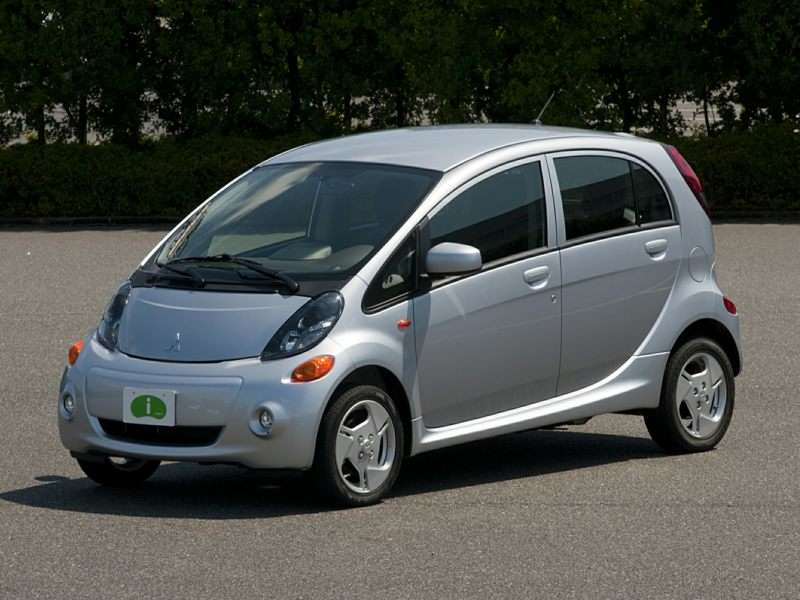
The Final Verdict
I think Mitsubishi made the right move by cutting the i-MiEV’s price. As with any cut-rate car, the i-MiEV is not without compromises: Shorter range, slower 240V charging, and a lack of electronic gee-gaws. But is this any different than the compromises made when buying an inexpensive gasoline-powered car? And look at the money you’ll save: The i-MiEV is $3,500 cheaper than a Chevrolet Spark, $6,000 cheaper than a Nissan LEAF, $19,000 cheaper than a BMW i3, and nearly $110,000 cheaper than a full-loaded Tesla Model S. The i-MiEV is a subcompact electric car that you can buy for the same price as a subcompact gasoline car — and then drive for a fraction of the cost. In my book, that makes it a winner.
